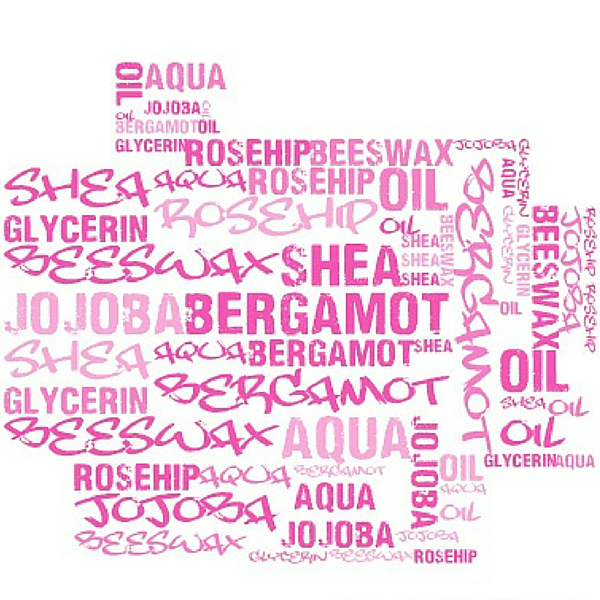Today I thought we could take a look at ingredient labels.
I get so frustrated by ingredient labels, especially when they so blatantly mislead consumers. Competition is rife in the personal care arena and companies have to ensure their products stand out from all the rest with clever marketing and beautiful packaging to grab consumer attention.
Although this makes for a really interesting and enlightening topic (which I will write about soon), today I want to talk about the importance of knowing how to prepare an accurate list of ingredients.
As formulators, it’s our responsibility, and a legal requirement, to ensure that the ingredients in our products are listed correctly, and in the right order so consumers can make an informed choice about their purchase.
There are specific rules we need to follow when listing our ingredients, which are fairly similar around the world, and we will take a look at those now.
- The ingredients list must be clearly visible on the product packaging.
- If an ingredient label can’t be displayed on the packaging due to the size, shape or nature of the product, information must be displayed with the product (by way of swing tags, leaflets etc…) to inform the consumer.
- The name of the ingredients must be listed using the correct International Nomenclature of Cosmetic Ingredients (INCI) name.
- All ingredients (except colour additives) with a concentration above 1% must be listed in descending order.
- Followed by ingredients (except colour additives) with a concentration 1% or below listed in any order.
- Followed by colour additives listed in any order.
Now the percentage concentration is where some people new to formulating fall down, especially when using blends of ingredients like some emulsifiers and surfactants.
When we use an ingredient that is a blend of say two or more ingredients, we can’t just list them as, A and B and C, we need to find out the composition of each individual ingredient in the blend and list them in the appropriate order.
You can often find this information listed on the ingredients MSDS (material safety data sheet) which is available from the supplier. Most often there will only be a % concentration range given e.g. ingredient (A) 30-50% and ingredient (B) 50-70%. You will need to take the mid-point of each making sure the total adds up to 100%, (A=40% and B=60%).
So what do we do now we have this information?
Let’s say we are formulating a body lotion and we are going to use an emulsifier that is a blend of cetearyl olivate (60%) and sorbitan olivate (40%) at 5% in our formulation.
We take the % we are going to be using (5) and times it by each of the components % concentration.
5 x 60% cetearyl olivate = 3%
5 x 40% sorbitan olivate = 2%
So on the list of ingredients (LOI) cetearyl olivate would be listed at the 3% mark and sorbitan olivate at the 2% mark.
To pull this all together, let’s work through an example formulation and prepare our list of ingredients.
Water phase
Water 77.7%
Glycerin 3%
Xanthan gum 0.3%
Oil phase
Emulsifier (cetearyl olivate & sorbitan olivate) 5%
Glyceryl stearate 2%
Squalane 5%
Jojoba oil 5%
Cool down phase
Geogard 221* 1%
Bergamot FCF 0.75%
Geranium 0.25%
*Geogard 221 is composed of dehydroacetic acid (88%), benzyl alcohol (8%) and water (4%). Used at 1% in formulation this equates to 0.88%, 0.08% and 0.04% respectively.
As these fall below the 1% threshold they can be placed in any order.
I could have placed the dehydroacetic acid at the end of the ingredients list with the benzyl alcohol if I wished, but I have chosen to place it in descending order to highlight where the 1% and below mark starts.

I hope this helps when you come to prepare your own list of ingredients.


